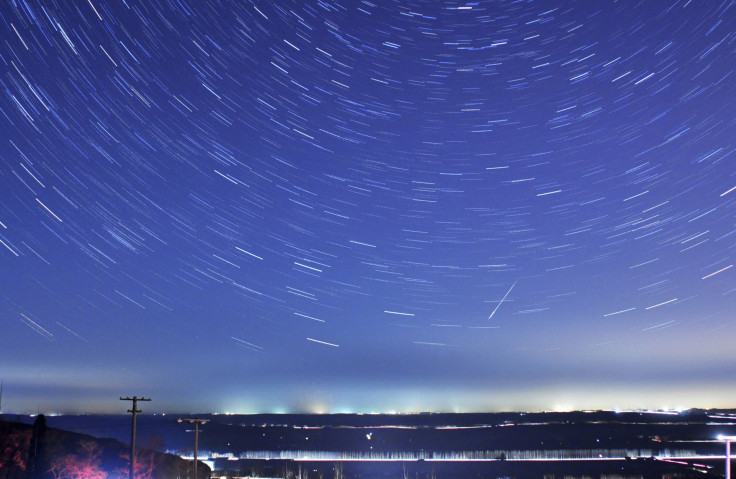Lyrid Meteor Show To Peak On April 21
KEY POINTS
- The Lyrids meteor shower will peak from April 21 to 22
- The shower is caused by debris from a passing meteor
- The meteor shower caused by Halley's Comet will take place in October
The Lyrid meteor shower, which is caused by the cosmic debris of a passing comet, will reach its peak starting on April 21. The shower is expected to produce about 15 to 18 meteors per hour.
The Lyrid meteor show is an annual event that usually happens from April 16 to 26. This year, the shower’s peak is expected to take place from April 21 to 22, according to SpaceWeather.
The annual meteor show is caused by the debris and dust particles of a comet known as C/1861 G1 Thatcher. The last time this comet passed through the inner section of the Solar System was in 1861. According to calculations based on the comet’s trajectory, it visits Earth’s neighborhood every 415 years.
Although it takes the comet centuries to complete its cycle, its massive trail of cosmic dust has maintained a steady presence within the Solar System. Each year, this cloud of debris reaches Earth and causes a stunning stellar display.
This year’s meteor shower is expected to reach its peak starting on Tuesday next week. During this period, stargazers might be able to see up to 18 meteors per hour. Each object in the Lyrids is expected to be as bright as the stars in the Big Dipper, which means they can be easily spotted from Earth under ideal weather conditions.
The upcoming meteor shower will be visible in both the Northern and Southern Hemispheres. As these cosmic objects hit Earth’s atmosphere at speeds of up to 110,000 miles per hour, they burn up and create fireballs and bright streaks of light, Telegraph reported.
Aside from the Lyrids, there are other notable meteor showers that will happen this year. One of these is the annual shower known as the Perseids, which usually takes place from July 17 to Aug. 24. During this year’s peak, which will start on Aug. 12, the shower is expected to produce up to 150 meteors per hour.
Another notable meteor shower happening this year is the Orionids. This meteor shower is produced by the trail of debris left by the Halley’s Comet. It is expected to reach its peak from Oct. 20 to 21.

© Copyright IBTimes 2024. All rights reserved.





















